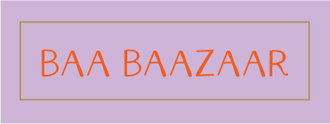
a special easter digest for you and you and you!
Publié le

For the last two-ish weeks, someone in my family has had COVID. After testing positive this morning, it’s now my turn. Being housebound at a time of year where I would normally be out and about has forced me to renew my interest in my interior surroundings. This, in the face of a creeping indifference brought on by the warm weather.
I revisited Laura Calder’s book The Inviting Life for a little nudge of inspiration and ran across a helpful idea. She talked about the idea of doing a home scan, similar to a body scan one would do during meditation. She suggests selecting a room or area of your home that you bump on and really honing your focus on it. Go over it slowly and deliberately (as if from the top of your head, down to your toes) with the goal of identifying what might be contributing to your displeasure in the space.
For me this space was my kitchen. Oh I truly hated to be in there and cook something in it? I’d rather not, thanks. When I did this scan of my kitchen, I became aware of a lot of very tangible things that were discouraging my enjoyment of the space and my time in it. A poorly organized pantry where things could not be easily located. The top of the fridge had become an unsightly dumping ground for boxes of baby formula, dog biscuits, and random loose papers. Closets that couldn’t be opened without stuff tumbling out. A coffee maker on its last legs. So my spring cleaning effort has been to transform my kitchen little by little into an inviting space where I might actually want to make and eat a meal with my family. It’s been a pleasant diversion from illness and cabin fever and I expect to find myself on the other side of this holistically healthier for it.
*
Two friends have contributed to this newsletter.
Sophia Pierro, a Ukrainian-Canadian member of the Baa Baazaar crew, shares her culture’s folk tradition of decorating easter eggs - Pysanky - in incredibly intricate and stunning designs.
Elizabeth Giffen, a baker of delicious things, has shared her recipe for lemon torte. Liz has not included a recipe for lemon curd with this recipe, even though it calls for it. This is because, as she put it: “I don't have my own recipe, I just use the Sally's Baking Addiction one lolol.” So you should use it too.
*
Whether Easter is a church thing for you or not, the feeling of springly renewal is a sweet treat for all to enjoy. And, hey! I hope you do.

The Ukrainian Easter egg- Pysanka in the singular and pysanky as plural—is derived from the Ukrainian verb pysaty, which means “to write.” So in this case, the word refers to the writing on the eggs.
While many are likely familiar with dying Easter eggs in solid colours, Ukrainian Easter eggs often feature complex "written" geometric and floral designs that all have complex and storied histories. Pysanka-making is a meditative art where you slowly cover sections of an egg shell with melted wax using a tiny stick tool that you heat up by candlelight.
The colours are applied in layers; first wax and then dye, from lightest to darkest. Then you slowly heat the egg against the candle's flame to melt all the wax and reveal the design underneath. If mistakes are made, you just roll with it and incorporate it into the design. Some people stick with traditional designs while others improvise and go with the flow.
As with any good Christian tradition, a number of different pagan origin stories persist for Pysanky, dating back before their association with the Easter holiday. One of these stories says that the ritual is meant to represent the return of sunshine after a long winter, and eggs are used because the yellow yolk is thought to resemble the sun. Another pre-Christian legend tells the story of a monster, the personification of evil, in the Carpathian mountains. In that story, the more pysanky people make, the tighter the chains are wrapped around the monster, keeping it at bay so that it doesn’t destroy the world (An appropriate tradition for Ukrainians at this time, I would say;).
In Christianity, eggs are a common symbol of the resurrection of Christ...so it makes sense to tie it with Easter! Traditional designs on the eggs are also imbued with meaning. The very common use of triangles on eggs represent the Holy Trinity (another nod to our Easter pal, Jesus). Different regions of Ukraine decorate eggs in different ways. For example, the pysanky in Western Ukraine boast drawings of chicks to represent fertility and deer to represent strength and prosperity. At my wedding, I was presented with a wedding egg that had two drawn white deer on it, under a tree. I keep this egg on display in my home all year-round.
The symbolism of the pysanky continues long after Easter. Some people put egg shells in cattle feed to make the cattle stronger or put them in gardens to enhance the harvest. Putting an egg at each of the four corners of a house is supposed to bring good luck.
If you're looking for a new folk craft to try, I would encourage you to check out the tutorials and workshops through Folk Shop. You can buy anything you need for Pysanky from this amazing Ukrainian store in Canada.
-Sophia Pierro (née Chirovsky)

Contact
baa baazaar
73 Roncesvalles Ave
Toronto, ON
M6R 2K6
hello@baabaazaar.com
416-604-0713
